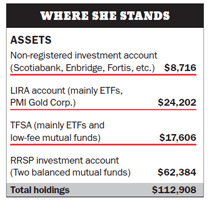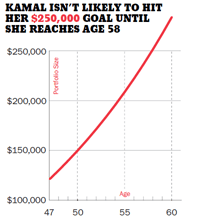Am I on track to have $250,000 by age 55?
Kamal wants to retire early in order to travel and do volunteer work but isn't sure she'll be able to meet her savings goal.
Advertisement
Kamal wants to retire early in order to travel and do volunteer work but isn't sure she'll be able to meet her savings goal.


 Do you want MoneySense to see if you’re on track to meet your own financial goal? If so, drop us a line at [email protected]
Do you want MoneySense to see if you’re on track to meet your own financial goal? If so, drop us a line at [email protected]
Share this article Share on Facebook Share on Twitter Share on Linkedin Share on Reddit Share on Email